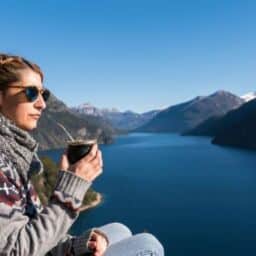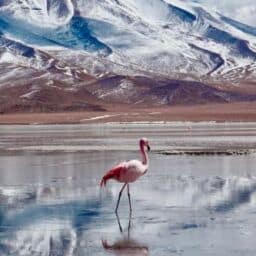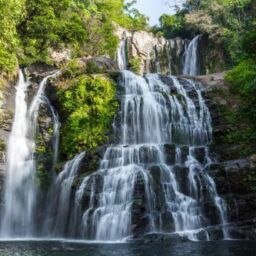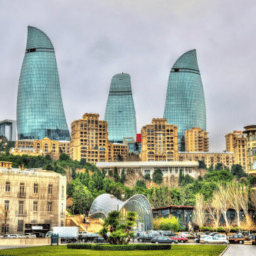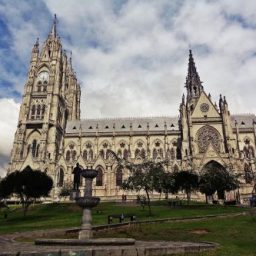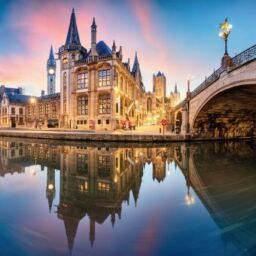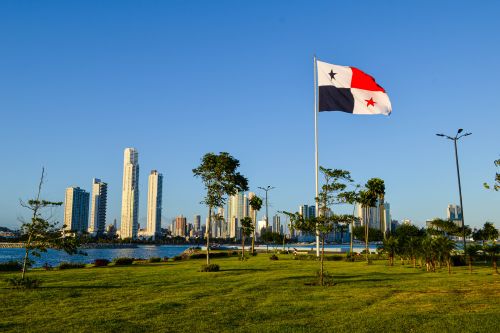

Panama, a country located in the south region of Central America, is mostly known for the Panama Canal. The long coastline, mild climate, abundant wildlife and vegetation draw the attention of an increasing number of travellers each year.
Panama’s history isn’t much different from the other countries in the region, so you can probably guess what language is spoken by its residents. Let’s set off on a journey to understand this place better.
Contents
Panama in a nutshell
Panama is sandwiched between Colombia to the south and Costa Rica to the north. The country’s area is 78,200 square kilometres. Within its territory, there are around 1,600 islands, located in both the Atlantic and Pacific Oceans. More than half of Panama consists of highlands and mountains. The country lies in an active seismic zone, with its tallest mountain being an active volcano Chiriquí, (3,478 metres above sea level).
People of Panama
Panama is a remarkable melting pot where different cultures coexist peacefully. Indigenous people from the Chibcha tribes, descendants of the European settlers, new immigrants from the West Indies, and expats from all over the globe, all experience the challenges and charms of living in this country.
Panama’s population stands at 4.5 million people (source: worldometers.com). Over 60% of the residents are descendants of indigenous inhabitants and European settlers (Mestizos). Indigenous people (12.5%) live mostly along the Caribbean coast, e.g. in the Comarca de San Blas region. Black people make up 9.2% of the society, Mulattos – 6.8%, and white people – 6.7% (source: r.pl).
Panama’s economy
Panama’s economy is one of the most dynamic in Central America. The Panama Canal brings in significant revenue from transit fees and other maritime services. It serves as a vital trade link between two oceans, at the same time strengthening the country’s position as a global logistics hub. This small strip of land was a point of argument between Panama and the United States in the past. In 1977, both parties signed an agreement that fulfilled Panama’s claims. However, the channel’s transfer happened only in 1999.
The Republic of Panama attracts investors from all over the world. The government-established free trade zone in Colón allows for duty-free and tax-free trade. The country sees numerous foreign tourists, which steadily increase the GDP and help to create new job opportunities for residents. Interestingly, although Panama’s currency is called Balboa, the Balboa banknotes do not exist. The residents use the U.S. dollar instead.
Are you currently on the hunt for employees who are fluent in Spanish for your Panama-based project? Do not believe somebody’s words: test the candidates’ language skills with Focus Audit Tool. The results will be available in the next 48 hours.
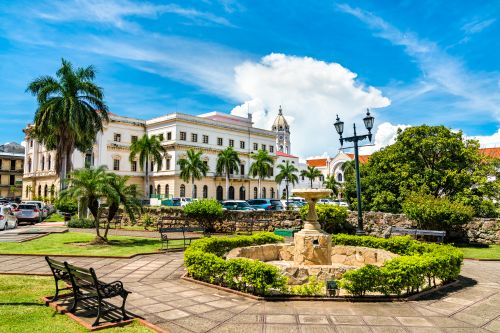
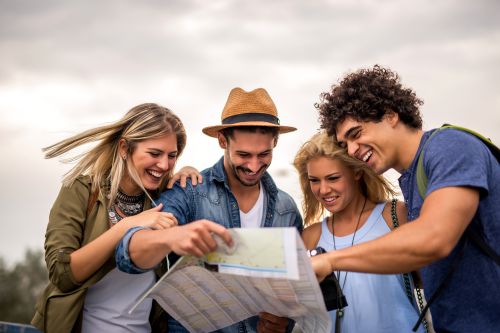
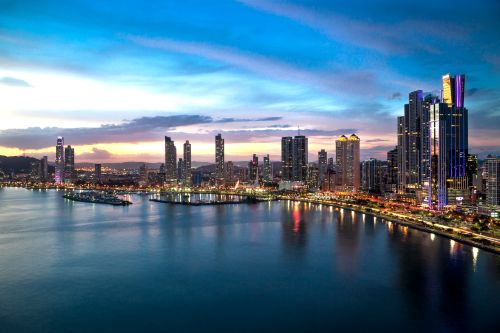
Panama’s culture
In Panama, there are still areas almost untouched by modern civilization. The example is the Kuna Indians’ population living in the Comarca de Kuna Yala. They produce traditional textiles and keep the customs of their ancestors alive.
In most of the country, the Caribbean and Spanish vibe is visible. You can see it in the traditional dishes, such as seafood and fish, which are seasoned with spices. Popular ingredients are coconut and mango. Typical dishes include sancocho (a thick and spicy stew) and ceviche (raw fish marinated in citrus juice).
What is the official language of Panama?
The official language of Panama, in line with its constitution, is Spanish. As the official language, it is predominant in public institutions, education system, and media. Over 90% of Panama’s residents use it daily, both in public and private lives (source: escapeartist.com).
People in Panama speak 14 main languages; seven of them belong to the largest indigenous groups. The most popular among them are Ngäbe and Kuna. In the Bocas del Toro region, English Creole is prevalent. Although it is strongly related to Shakespeare’s language, it can be tricky to understand even for native English speakers.
Spanish language in Panama
The Spanish language was introduced to Panama by Spanish colonizers in the 16th century. Until 1821, when Panama split from the Republic of Colombia, it was Spain that dictated the politics of the Central American state.
The influence of other languages on Spanish in Panama is related to constant interactions with the indigenous population, African slaves, and contemporary immigrants from Great Britain, the United States, and Caribbean countries.
Panamanian Spanish
Just like other accents from South and Central America, Panamanian Spanish can be distinguished easily from the standard language from the Iberian Peninsula. Some basic differences include:
- Elision of the final syllable: Panamanians often drop the last syllable of the word. Especially, if it is a vowel or the letter “s”. In that accent, the word pescado (“fish”) sounds like pescao.
- Aspiration of ”s”: The consonant “s” at the end of the word or before other consonants is pronounced with a noticeable breath. The word dos (“two”) sounds more like doh in Panamanian Spanish.
- Substitution of “l” with “r” at the end of the word (the preposition al may sound more like ar).
- Intonation: Panamanian accent is distinguished by dynamic intonation and a melodic tone. You can notice it easily when a speaker gets emotionally engaged in a conversation.
- Vocabulary and regional expressions: Panamanian Spanish borrows heavily from English, coining neologisms, e.g. printear (“to print”), failear (“to file”), and refilear (“to refill”). Other expressions not used by Spaniards include chantin (“house”), chatta (“serious”), and chen chen (“money”).
Have you got a text written in one of the Latin American dialects? Do not worry, our Spanish translators have got experience working with Mexican, Panamanian, Columbian and many more language versions. Please don’t hesitate to contact us to get a quote.
Ngäbe (Guaymí) language in Panama
Ngäbe is an indigenous American language belonging to the Chibchan language family, spoken by over 200,000 people. Its name comes from the word “creator”. It is spoken not only in Panama, but also in Costa Rica. Ngäbe is written using the Latin alphabet.



English language in Panama
English is taught in private, international, and bilingual schools across Panama. About 8% of the population speaks the language. A significant portion of them are immigrants from the West Indies (source: internationalliving.com).
In larger cities, especially Panama City, you’ll find many people who are fluent in English. However, in rural areas or smaller towns, you might have trouble finding someone who can communicate in English freely.
Get the basics of the official language before travelling to Panama. Are you in a rush? Pick the individual intensive Spanish course that will let you learn the most. The lector will prepare the classes according to your skills and needs: You will learn basic expressions and vocabulary.
Other languages in Panama
In Panama, you will also find other languages: Buglere, Yue, Hakka, Embera, Embera-Catio, Northern Embera, French Creole, English Creole, Kuna, Teribe, and Woun Meu. Moreover, around 4% of the population speaks French, and 1% speaks Arabic (source: studycountry.com).
What to visit in Panama?
From historic cities, through tropical forests, to paradise beaches, Panama has something to suit the taste of every traveller, no matter his budget. Here you will find our subjective guide to the most important places:
- The famous Panama Canal: Visit the place to admire ships passing through the Miraflores locks.
- Casco Viejo in Panama City: The old town of the capital is worth visiting for its colonial architecture and vibrant streets.
- Soberanía National Park offers the opportunity to hike trails in the tropical forest.
- Bocas del Toro: A perfect place for resting on paradise beaches and finding an ideal spot for diving and observing exotic fish or coral species.
- Taboga Island, also known as the Island of Flowers, is heaven for beach lovers. Both tourists and locals choose this place to rest.
- Embera Village allows you to glimpse the daily life of residents and learn about their culture.
Do you want to experience the Panamanian lifestyle? Pack your passport and international driving licence, brush up your Spanish (or learn the basics), and go to the airport! The Caribbean Sea, delicious food, and friendly locals await you.



